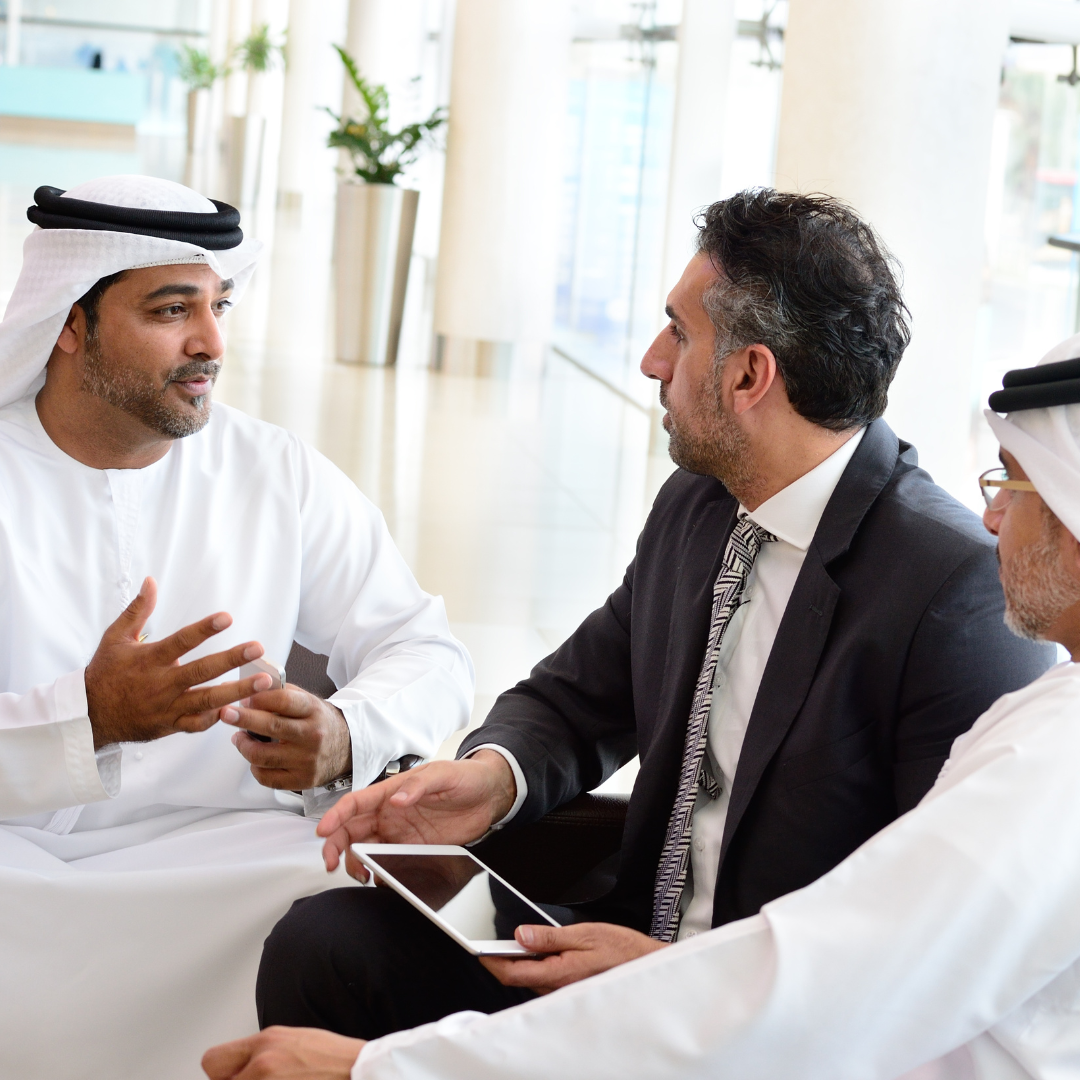How Open Banking is a Key Driver of Financial Inclusion in MENA
Imagine, if you will, a world where everyone, regardless of their income level, social status, or geographic location, has a bank account. They have ...

Imagine, if you will, a world where everyone, regardless of their income level, social status, or geographic location, has a bank account. They have a debit card, a credit card, a savings account, insurance, and access to any and all financial products and services they need.
This is a world where financial inclusion is at 100%.
And now thanks to the advanced banking technology at our disposal, we’re close to making this world our reality. Banks and fintechs are deploying several digital tools, such as artificial intelligence, machine learning, and more, to make their products and services widely and seamlessly accessible to all.
But there’s one approach – call it a tool, a technology, or simply a new way of banking – that stands out from all others. It’s one of the most effective drivers of financial inclusion out there.
And, it’s open banking, of course!
Open banking is allowing banks around the world to truly harness the power of data to innovate customised financial products that bring the unbanked and under-banked population inside the financial ecosystem. And fintechs are right up there with institutional players, using open banking to accelerate financial inclusion.
But, before diving deeper into how open banking is proving to be a game-changer, let’s see how far we’ve come on the journey to financial inclusion in recent years, and how far we still have to go…
What does the data say?
According to the World Bank, an estimated 1.4 billion adults worldwide currently do not have access to a basic bank account, and, therefore, cannot benefit from the use of other financial services, such as payment cards, credit, insurance, etc.
Banks, fintechs, and regulators around the world are working hard to close this gap and increase financial inclusion.
Developed countries have already come a long way in recent years. But emerging markets are catching up. In the MENA region alone, financial inclusion has already tipped into the majority. The latest 2021 World Bank Global Findex Data* shows that in the region, account ownership among individuals aged 15 and higher stands at 52.8%. Additionally, 52.4% have borrowed money in some form, with 15.3% having accessed credit from a formal financial institution or a mobile money account.
GCC countries in particular have seen a big jump in financial inclusion over the last few years. For example, The World Bank’s Global Financial Inclusion DataBank shows that 85.7% of people aged 15 and higher in the UAE and 74.3% in Saudi Arabia own and operate a bank account. Access to formal credit has also become much easier in these countries. For example, 23.9% and 32.4% of the 15+ population segment have borrowed from a financial institution in the UAE and Saudi Arabia, respectively.
As you can see, these numbers show that much progress has been made across the region in improving access to financial products and services. There’s still ground to cover, yes, but with open banking gaining momentum in key markets, including Saudi Arabia, Bahrain, and the UAE, and with the rest catching up fast, the prospects for financial inclusion in MENA look promising.
4 ways open banking is a true game changer for financial inclusion
Open banking can be a powerful agent of change in the fight for financial inclusion. And that’s because of one simple reason: It radically streamlines customer data sharing and usage between banks and fintechs. And data, as we all know, is priceless!
With open banking APIs, banks and fintechs have been able to simplify the customer journey and offer customised products. Here are four ways open banking is making financial services more accessible and inclusive:
1. Before OB: Documentation-dependent processes
For a customer, opening a bank account requires standard KYC (know-your-customer) and AML (anti-money-laundering) checks, such as proof of identification, income, residence, etc. Before open banking, customers needed to produce and manually provide these documents to their bank. Those that didn’t have the required paperwork or didn’t want to go through the hassle couldn’t access financial services.
After OB: Streamlined account verification
With open banking, banks are now saying goodbye to manual documentation. Instead, they are using KYC data from various sources, such as banks, telecommunication data, social media, and mobile wallets, to streamline customer onboarding. That means there’s more than just a single source to help verify a customer’s income, financial history, and credit ratings. Onboarding checks can now be done in minutes.
2. Before OB: Lack of customer data
To provide access to financial services a bank requires data on the customer to assess their risk profile. Take credit lending, for example. To give a loan to someone, a bank needs their credit history, spending behaviour, income pattern, employment history, and so on. In a world without open banking, gathering all this data was a hassle and dependent on manual documentation. And, more importantly, it would require the customer to have prior banking history. Therefore, those without a bank account couldn’t effectively borrow from a bank.
After OB: Heaps of data to power consumer lending
Now that we have open banking, banks and other financial institutions no longer need a typical credit history of a customer to make a lending decision. They are now using alternative financial data, such as bill payments, rent payments, mobile top-ups, etc., accessed through open banking APIs, to process loan applications faster. Processes involved in assessing credit risk like income verification have become streamlined and with the right use of technology, lending decisions are being made within minutes.
And that’s not all. By enabling data sharing and cost-effective digital transactions, open banking allows the underbanked to build a financial profile and transaction history more easily. And even if their activity is fragmented across the financial ecosystem, banks can use open banking APIs to access all the data in an instant and extend credit at lower rates!
3. Before OB: Limited product offerings
Most traditional financial products and services are catered to specific customer profiles only. They were not as flexible and didn’t account for variation in spending behaviour, budgeting habits, cash flow needs, etc. As a result, only customers who fit the target profile could access essential products and services.
After OB: Customised products and services
What open banking does best is help banks and fintechs organise and enrich customer spending data and convert it into actionable behavioural insights. And they can use these insights to innovate customised products and services that are flexible and address the needs of every individual customer. As more people enter the financial ecosystem, offerings are becoming more diverse and personalised. But more importantly, perhaps, they are becoming more inclusive.
4. Before OB: Lack of financial know-how
If we look at financial inclusion from a customer’s POV, there’s one key hurdle – lack of information and know-how about the different financial products and services out there. Not everybody knows how to operate a bank account or use a credit card efficiently or save money effectively or apply for a loan. The complexity of it all stops them from accessing and regularly using essential financial products and services.
After OB: Improving financial health and promoting literacy
Thanks to open banking, banks and fintechs can help businesses and individuals gain better control of their finances, learn how to use new products and services to their benefit, and ultimately, become well-informed financial customers who are able to select the right products for their needs.
Supporting Micro, Small, and Medium Enterprises & Individuals
Individuals aren’t the only ones who benefit from open banking. Open banking-enabled insights also help micro, small, and medium enterprises (MSMEs) gain a better understanding of their finances, track cash flows, and automate payments. Plus, the account aggregation and payment initiation services that open banking enables pave the way for businesses to make informed decisions and reduce cash management costs. They also get easier access to capital because, with open banking, there’s no longer any need for cumbersome paperwork to qualify for loans.
We can apply the same open banking use cases on an individual scale as well. Take open banking powered personal financial management tools, for example. They help people manage their income better, plan and track their spending wisely, and improve their financial literacy. And if we add a layer of gamification on top of open banking tools, there’s real potential to uplift the underbanked and promote the use of financial services and products.
Achieving full financial inclusion is but a matter of time
Yes, full financial inclusion is not yet a reality. But we have come a long way in a very short span of time. And a lot of it is down to advanced technology and digital tools. The meteoric rise of smartphones, internet penetration, and mobile connections have accelerated the adoption of digital banking solutions.
And now, with the revolutionary shift in banking and financial services being powered by open banking, the future of financial inclusion in MENA is bright! In the region, Saudi Arabia and Bahrain are leading in open banking implementation, with the UAE catching up fast. As other economies embrace open banking and open finance, financial inclusion will only accelerate.
Advance financial inclusion with income verification
As a leading open banking platform with a clear view of where the banking industry is headed, we can safely say it’s only a matter of time before financial inclusion is realised in the region.
And you can be a part of this positive process by powering your financial tools with open banking-powered Income Verification, allowing you to:
- Streamline the credit application process
- Increase revenue
- Enable better credit decisions
*World Bank Global Findex. Parameters: ‘UAE’ & ‘Saudi Arabia’. ‘Account Ownership’, ‘Borrowed Any Money’, ‘Borrowed Money from a Formal Institution’. 2021.
Related articles
See all blogsSign up to our newsletter
Sign up here to receive news and updates.






